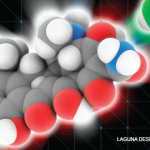She also noted that 23 cases of Guillian-Barré Syndrome, linked to tumor necrosis factor (TNF) antagonists have been reported in the literature, though it is unclear whether the link is with the drug, the disease, or with associated infections.3
“Consider medications, such as leflunomide and TNF antagonists,” Dr. Lee said, “as potential causes of peripheral neuropathy.”
Treatment Options
Franz Blaes, MD, of the department of neurology at Gummersbach Hospital in Germany, said the treatment approach to peripheral neuropathy in patients with rheumatic diseases is not a simple thing.
“The problem is, if you’re going to treat peripheral neuropathy in rheumatic disease, we need a type of clear classification,” he said. “And the question is: Do we have one? Maybe not, maybe we have one. I’m not sure about it.”
Patients can be classified neither as a rheumatic disease patient, nor as a patient with a neurological syndrome, but as both, he said.
Patients with inflammatory rheumatic disease—those with Sjögren’s syndrome, scleroderma, or lupus, for instance—who have a demyelinating neuropathy often respond well to steroids or intravenous immunoglobulin (IVIg), he said.
Those with pure autonomic neuropathy—rare in inflammatory rheumatic disease patients—might respond to steroids, IVIg, or plasmapheresis.
For nonsystemic vasculitic neuropathy, steroids alone are the first-line therapy, but a combination of steroids and cyclophosphamide (CYC) or methotrexate can be used in cases with rapid progression. IVIg, plasmapheresis, or rituximab can be tried in refractory cases, Dr. Blaes said.
In cases of mixed cryoglobulinemic vasculitis with neuropathy, interferon-alpha has been shown to have little effect on neuropathy. For a steroids–CYC combination, there are no randomized controlled trials or case series available to prove their effects. Plasma exchange, Dr. Blaes said, has been effective in some patients. In one trial, 60% of patients improved on rituximab.4
In another study, 19 out of 22 patients with systemic vasculitic peripheral neuropathy—in seven published case series—improved after taking rituximab.5
For those with small-fiber neuropathy, steroids plus neuropathic pain treatment can be effective, Dr. Blaes said.
“The treatment of neuropathies in rheumatology cannot be based only on the underlying vasculitic disease or the underyling neurological syndrome,” he said. “You have to take into account both sides.”
Thomas Collins is a freelance medical writer based in Florida.
References
- Mellgren SI, Lindal S. Nerve biopsy—some comments on procedures and indications. Acta Neurol Scand Suppl. 2011;191:64-70.
- Ruth A, Schulmeyer FJ, Roesch M, Woertgen C, Brawanski A. Diagnostic and therapeutic value due to suspected diagnosis, long-term complications, and indication for sural nerve biopsy. Clin Neurol Neurosurg. 2005;107:214-217.
- Alvarez-Lario B, Prieto-Tejedo R, Colazo-Burlato M, Macarrón-Vicente J. Severe Guillain-Barré syndrome in a patient receiving anti-TNF therapy. Consequence or coincidence. A case-based review. Clinc Rheumatol. 2013 May 11. [Epub ahead of print]
- Ferri C, Cacoub P, Mazzaro C, et al. Treatment with rituximab in patients with mixed cryoglobulinemia syndrome: Results of multicenter cohort study and review of the literature. Autoimmun Rev. 2011;11:48-55.
- Eriksson P. Nine patients with anti-neutrophil cytoplasmic antibody-positive vasculitis successfully treated with rituximab. J Intern Med. 2005;257:540-548.



